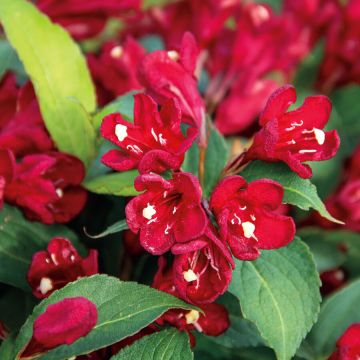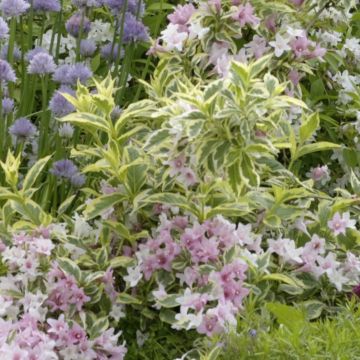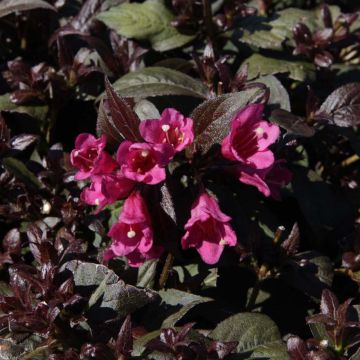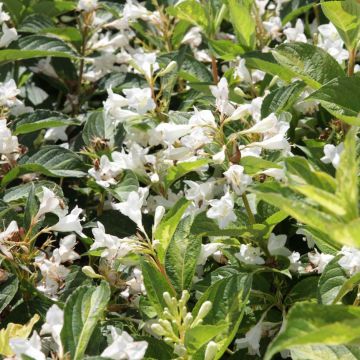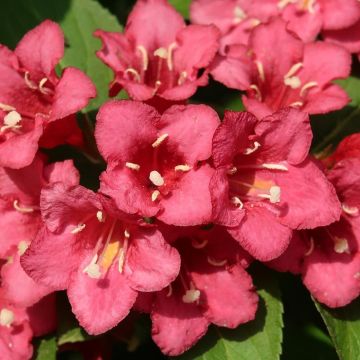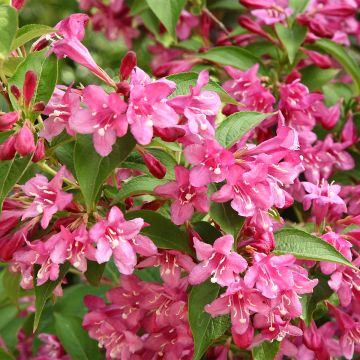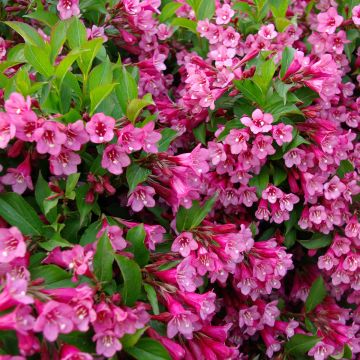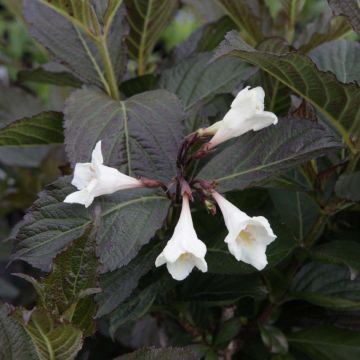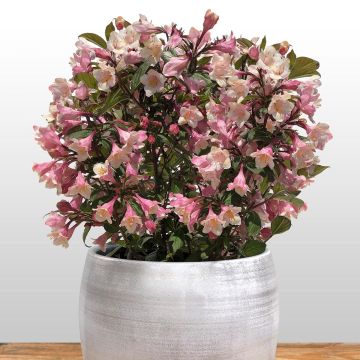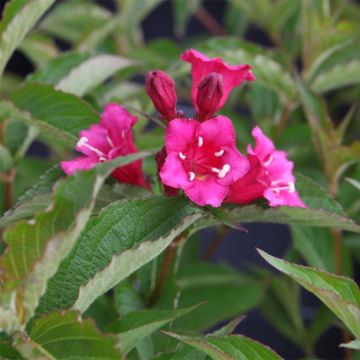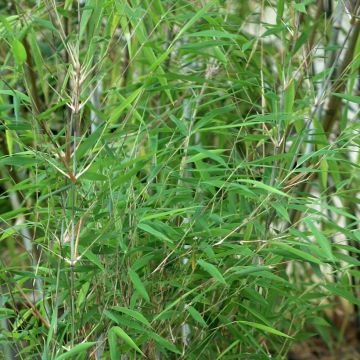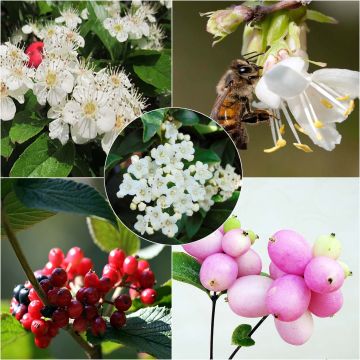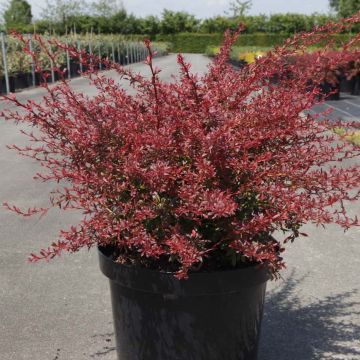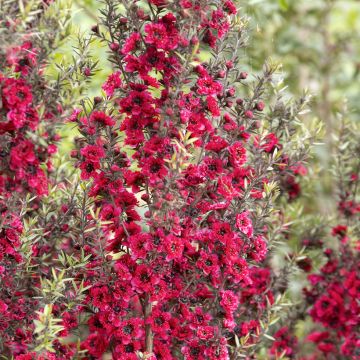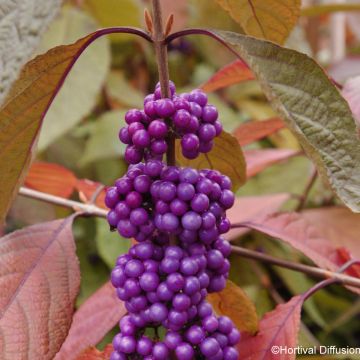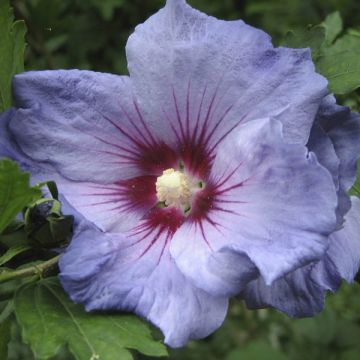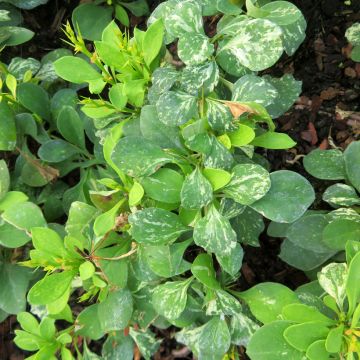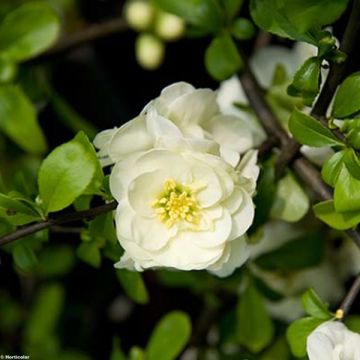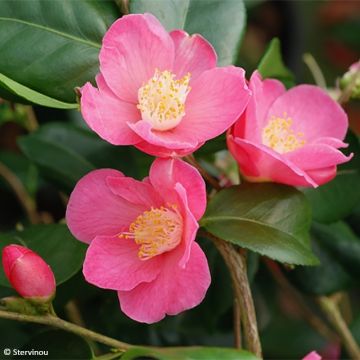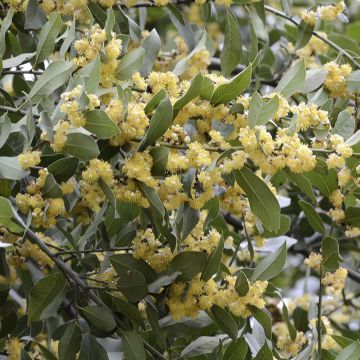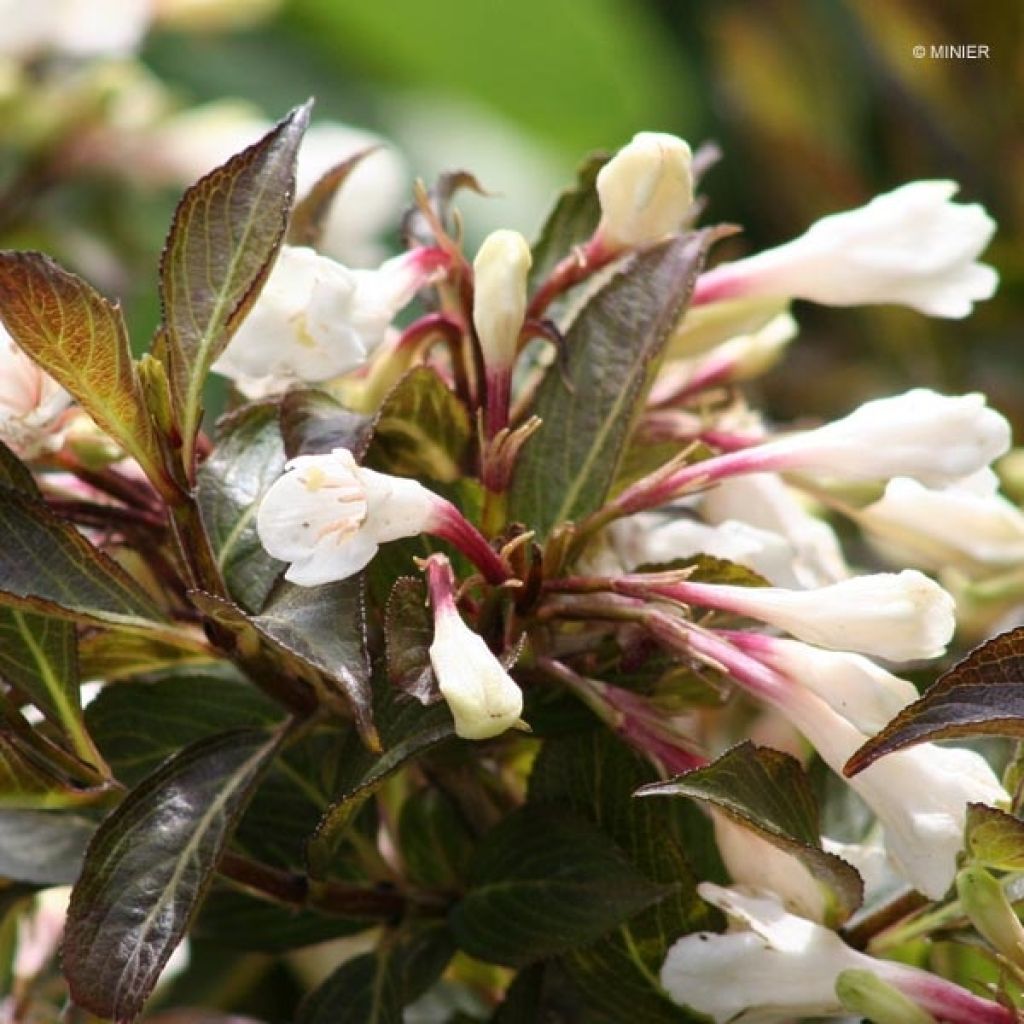

Weigela Black and White
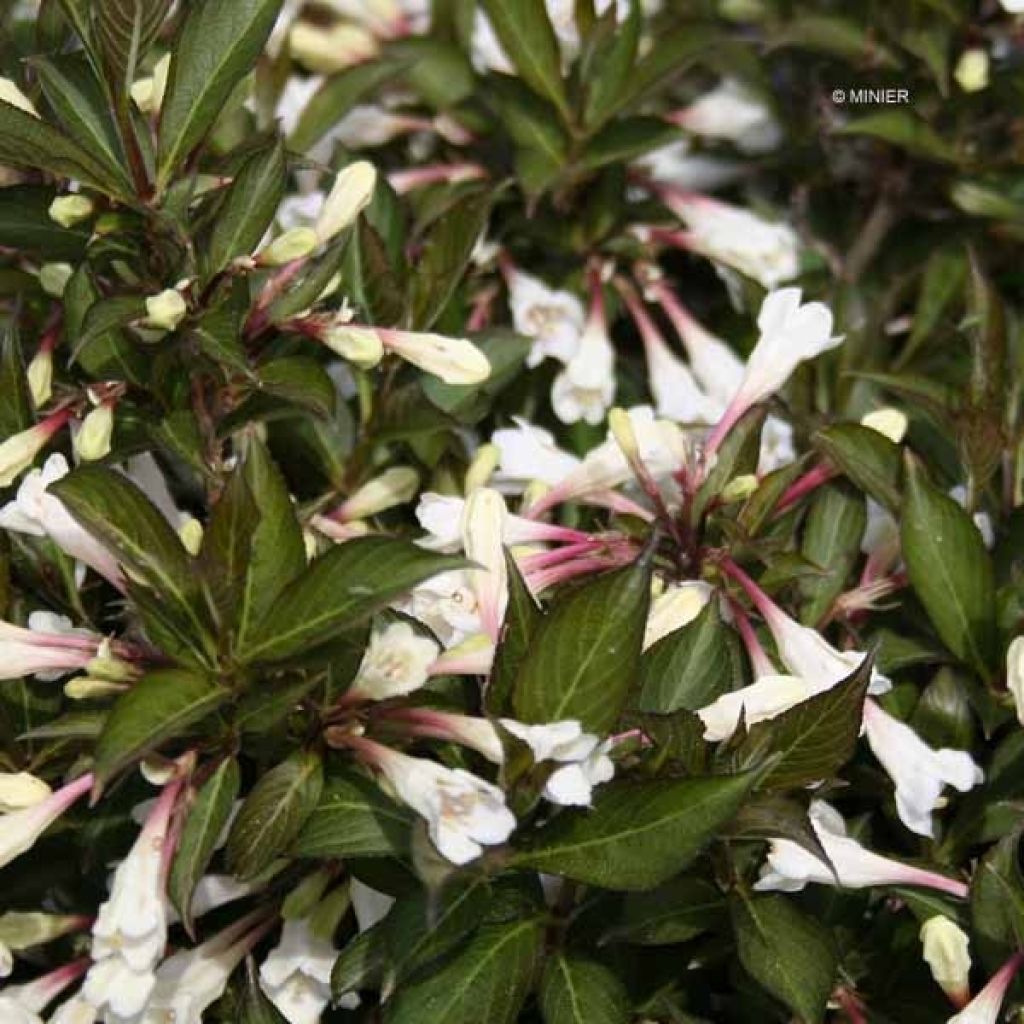

Weigela Black and White
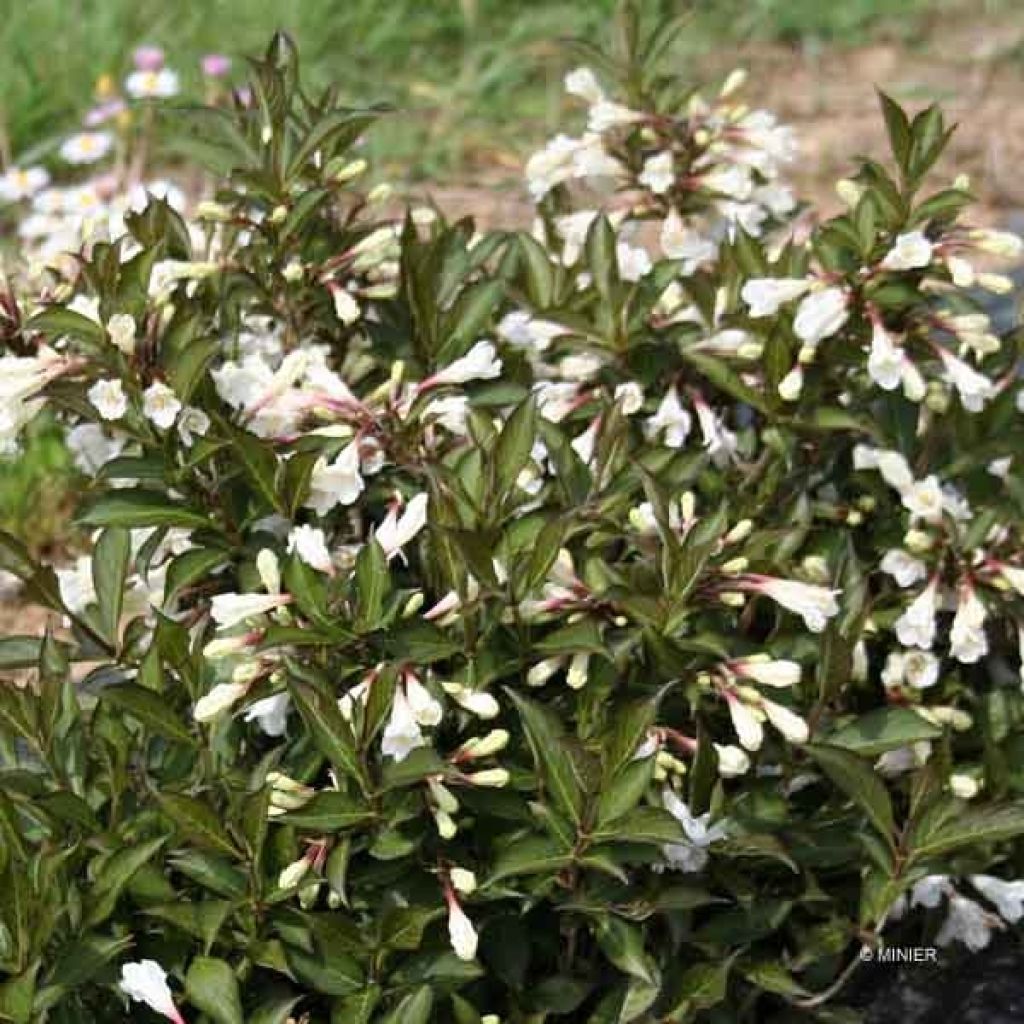

Weigela Black and White
Weigela Black and White
Weigela Black and White® Courtacad1 cov
Old-fashioned Weigela
Parcel arrived in a sorry state despite the markings on the box. The plant has survived the winter well, looking forward to seeing it bloom as spring approaches.
Hélène, 07/03/2024
This item cannot be shipped to the selected country
Delivery charge from €5.90
More information
Schedule delivery date,
and select date in basket
This plant carries a 24 months recovery warranty
More information
We guarantee the quality of our plants for a full growing cycle, and will replace at our expense any plant that fails to recover under normal climatic and planting conditions.
From €5.90 for pickup delivery and €6.90 for home delivery
Express home delivery from €8.90.

Does this plant fit my garden?
Set up your Plantfit profile →
Description
The Weigela 'Black and White' is a relatively recent dwarf variety. This beautiful bush with a rather spreading habit will reach a height of about 60 cm (23.6 in) with a spread of 80 cm: it will therefore be a great choice for small spaces or for container gardening. It combines dark green-purple foliage with bright, ivory white trumpet-shaped flowers that taper to red at their base. Elegant even in its compact habit, this plant will bring a trendy and original touch to the foreground of a border or in a pot on the terrace or balcony.
The Weigela 'Black and White' was obtained in 2009 by the INRA of Angers. Weigelas are Asian and belong to the caprifoliaceae family, just like honeysuckles. This innovative variety received the Bronze Medal at PLANTARIUM 2009 (Boskoop - NETHERLANDS).
It is a low bushy shrub with a rather spreading and compact growth habit. It eventually forms a ramified bush with arched branches, reaching a height of about 60 cm (23.6 in) with a spread of 80 cm. Its deciduous foliage is composed of lanceolate leaves, slightly undulate, which have a very dark colour, a dark green tinged with purple and chocolate during flowering. Its funnel-shaped flowers, produced abundantly in May-June, are carried in corymbs at the ends of the branches. They are ivory white, becoming pink-purple at their base. This flowering is also nectar-bearing. The autumn foliage, also very ornamental, is a purple-red colour.
Hardy down to -20°C (-4 °F), the Weigela 'Black and White' thrives in sunny or semi-shady positions, in a moist but well-drained soil. Its graceful, spreading and compact habit makes it an elegant shrub, and the contrast between its almost black foliage and its white flowers gives it a unique personality. In a border, for example, you can give it companions such as variegated dogwoods, a small almost white willow (Salix rosmarinifolia or Repens 'Nitida'), a golden-leaved spirea (Spiraea 'Tor Gold') or a white and massive-flowering spirea (Spiraeae vanhouttei), or a compact Viburnum 'Bailey Compact'. In the background, the dark green foliage of hollies, boxwoods, or yews will provide a beautiful backdrop for its contrasting colours and ensure the winter scenery. You can also plant this weigela in a container to decorate the terrace, or plant it as a standalone to attract attention in small gardens.
Report an error about the product description
Weigela Black and White in pictures
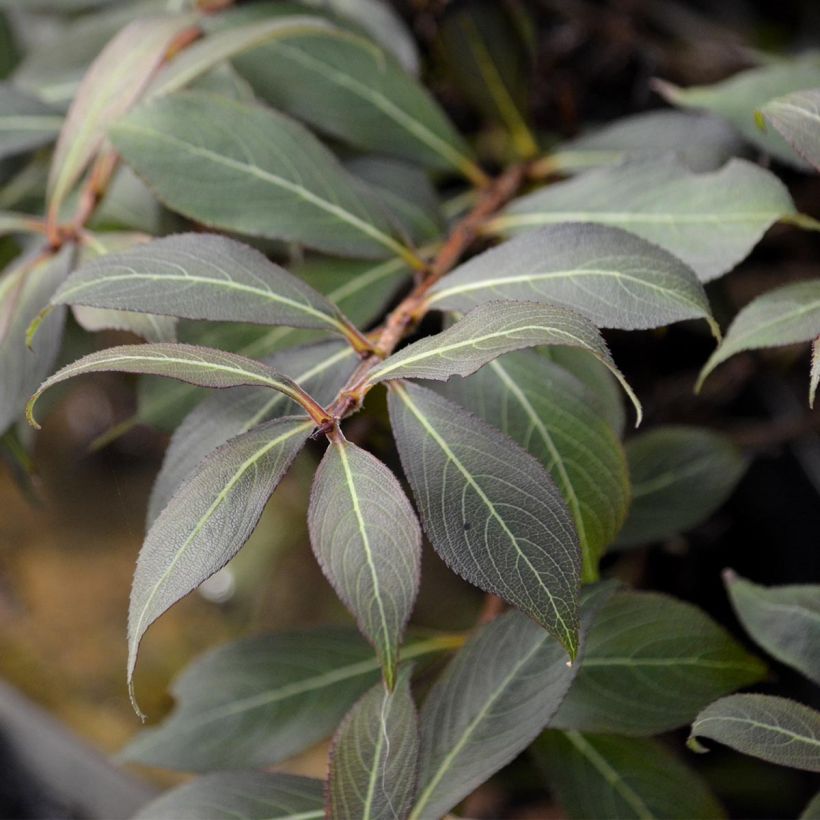

Plant habit
Flowering
Foliage
Botanical data
Weigela
Black and White® Courtacad1 cov
Caprifoliaceae
Old-fashioned Weigela
Cultivar or hybrid
Other Weigela
Planting and care
This hardy plant adapts to all types of soil, well-drained and moist, and appreciates sunny or slightly shaded exposures. Pruning is recommended after flowering for maintenance. This surprising bush can be grown in a large pot or in flowerbeds in association with perennials or other low-growing bushes.
Planting period
Intended location
Care
-
, onOrder confirmed
Reply from on Promesse de fleurs
Hedge shrubs
Haven't found what you were looking for?
Hardiness is the lowest winter temperature a plant can endure without suffering serious damage or even dying. However, hardiness is affected by location (a sheltered area, such as a patio), protection (winter cover) and soil type (hardiness is improved by well-drained soil).

Photo Sharing Terms & Conditions
In order to encourage gardeners to interact and share their experiences, Promesse de fleurs offers various media enabling content to be uploaded onto its Site - in particular via the ‘Photo sharing’ module.
The User agrees to refrain from:
- Posting any content that is illegal, prejudicial, insulting, racist, inciteful to hatred, revisionist, contrary to public decency, that infringes on privacy or on the privacy rights of third parties, in particular the publicity rights of persons and goods, intellectual property rights, or the right to privacy.
- Submitting content on behalf of a third party;
- Impersonate the identity of a third party and/or publish any personal information about a third party;
In general, the User undertakes to refrain from any unethical behaviour.
All Content (in particular text, comments, files, images, photos, videos, creative works, etc.), which may be subject to property or intellectual property rights, image or other private rights, shall remain the property of the User, subject to the limited rights granted by the terms of the licence granted by Promesse de fleurs as stated below. Users are at liberty to publish or not to publish such Content on the Site, notably via the ‘Photo Sharing’ facility, and accept that this Content shall be made public and freely accessible, notably on the Internet.
Users further acknowledge, undertake to have ,and guarantee that they hold all necessary rights and permissions to publish such material on the Site, in particular with regard to the legislation in force pertaining to any privacy, property, intellectual property, image, or contractual rights, or rights of any other nature. By publishing such Content on the Site, Users acknowledge accepting full liability as publishers of the Content within the meaning of the law, and grant Promesse de fleurs, free of charge, an inclusive, worldwide licence for the said Content for the entire duration of its publication, including all reproduction, representation, up/downloading, displaying, performing, transmission, and storage rights.
Users also grant permission for their name to be linked to the Content and accept that this link may not always be made available.
By engaging in posting material, Users consent to their Content becoming automatically accessible on the Internet, in particular on other sites and/or blogs and/or web pages of the Promesse de fleurs site, including in particular social pages and the Promesse de fleurs catalogue.
Users may secure the removal of entrusted content free of charge by issuing a simple request via our contact form.
The flowering period indicated on our website applies to countries and regions located in USDA zone 8 (France, the United Kingdom, Ireland, the Netherlands, etc.)
It will vary according to where you live:
- In zones 9 to 10 (Italy, Spain, Greece, etc.), flowering will occur about 2 to 4 weeks earlier.
- In zones 6 to 7 (Germany, Poland, Slovenia, and lower mountainous regions), flowering will be delayed by 2 to 3 weeks.
- In zone 5 (Central Europe, Scandinavia), blooming will be delayed by 3 to 5 weeks.
In temperate climates, pruning of spring-flowering shrubs (forsythia, spireas, etc.) should be done just after flowering.
Pruning of summer-flowering shrubs (Indian Lilac, Perovskia, etc.) can be done in winter or spring.
In cold regions as well as with frost-sensitive plants, avoid pruning too early when severe frosts may still occur.
The planting period indicated on our website applies to countries and regions located in USDA zone 8 (France, United Kingdom, Ireland, Netherlands).
It will vary according to where you live:
- In Mediterranean zones (Marseille, Madrid, Milan, etc.), autumn and winter are the best planting periods.
- In continental zones (Strasbourg, Munich, Vienna, etc.), delay planting by 2 to 3 weeks in spring and bring it forward by 2 to 4 weeks in autumn.
- In mountainous regions (the Alps, Pyrenees, Carpathians, etc.), it is best to plant in late spring (May-June) or late summer (August-September).
The harvesting period indicated on our website applies to countries and regions in USDA zone 8 (France, England, Ireland, the Netherlands).
In colder areas (Scandinavia, Poland, Austria...) fruit and vegetable harvests are likely to be delayed by 3-4 weeks.
In warmer areas (Italy, Spain, Greece, etc.), harvesting will probably take place earlier, depending on weather conditions.
The sowing periods indicated on our website apply to countries and regions within USDA Zone 8 (France, UK, Ireland, Netherlands).
In colder areas (Scandinavia, Poland, Austria...), delay any outdoor sowing by 3-4 weeks, or sow under glass.
In warmer climes (Italy, Spain, Greece, etc.), bring outdoor sowing forward by a few weeks.

































